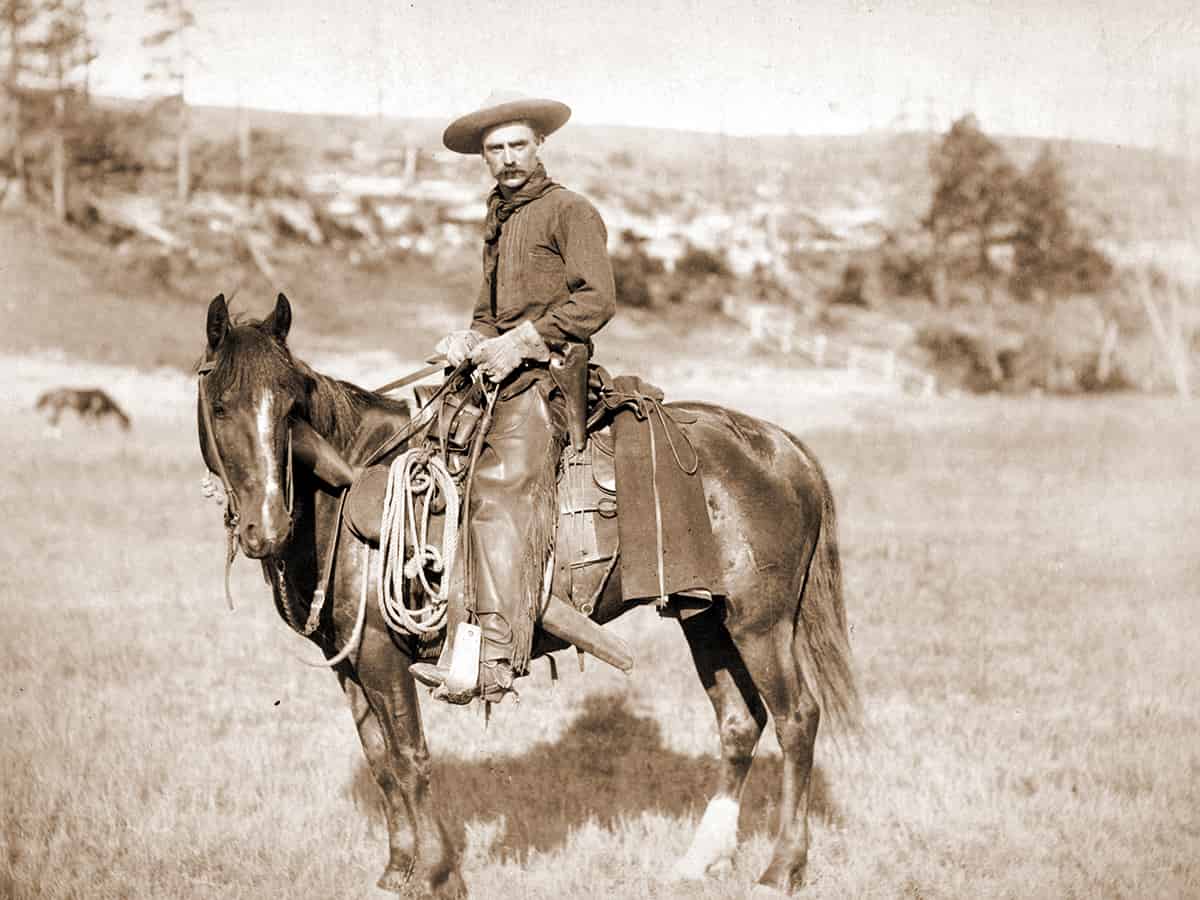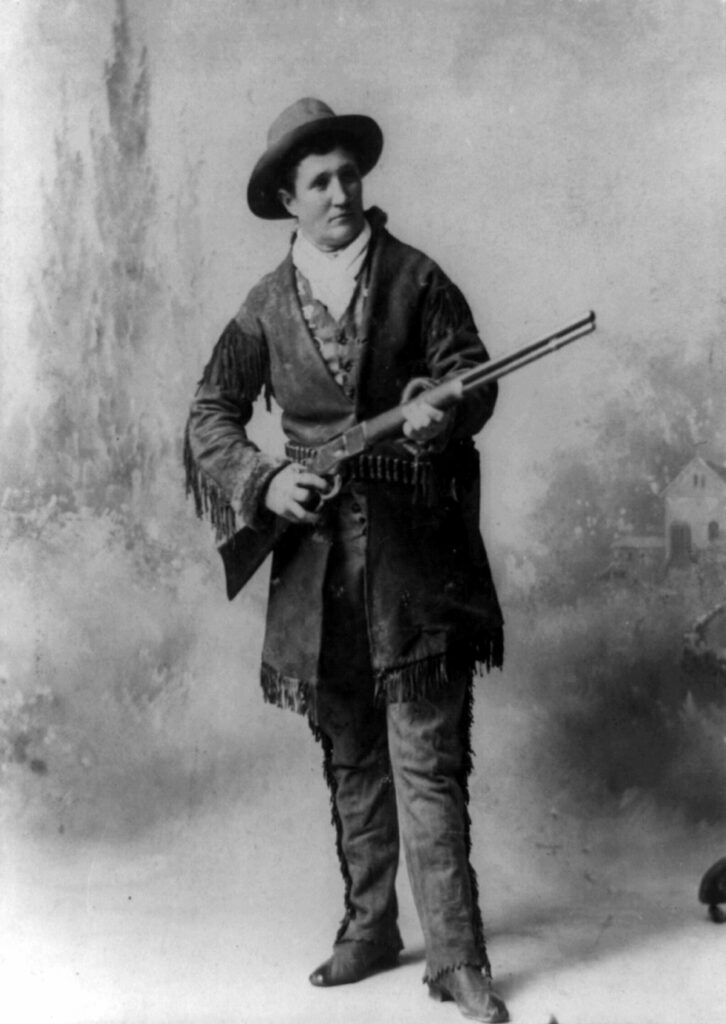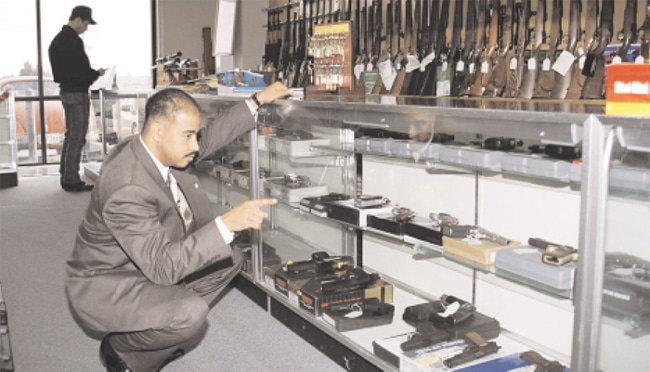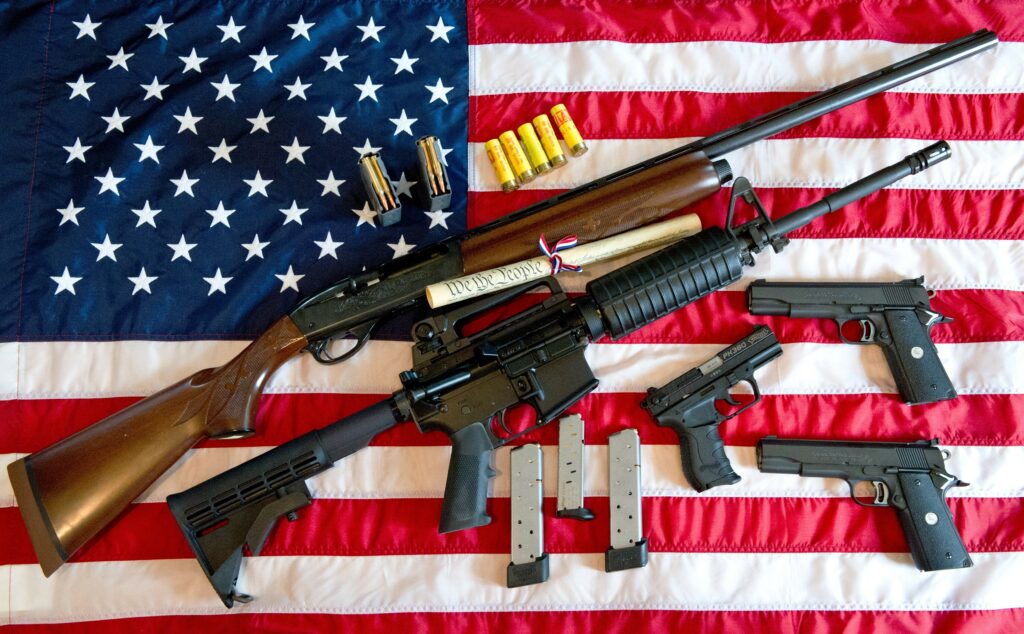

Laws must be judged on the basis of results. The consequences of existing lax gun laws in the US are there for all to see.
According to the Switzerland-based Small Arms Survey (2018), with less than 5% of the world’s population, the United States has 46% of the world’s civilian ownership of guns.
It works out to 120.5 guns per hundred people for the United States, while in the case of Canada, it is 34.7, UK 4.6 and Japan 0.3.
As for the gun-related homicides per 100,000 persons, it is 4.12 for the United States, while in the case of Canada, it is 0.5, UK 0.04, and Japan 0.02.
The total number of deaths from guns in the US, both homicide and suicide, in 2021 was about 48,000 which is 25% more than the deaths from car accidents.
The correlation between the scale of ownership of guns and gun deaths is glaringly obvious.
Moreover, because of the ease with which one can get any kind of gun, including rapid-firing automatic rifles, mass shootings are uniquely endemic in the US. Already there have been more than 100 mass shootings this year or more than one per day. Nearly 160 people have died in mass shootings, including 11 in Monterey Park California. Particularly tragic is the frequent mass shooting of schoolchildren and teachers. Only a few days ago three 9-year-old children and three adults were killed in a school shooting in Nashville, Tennessee.
To understand constitutional issues, one must start by studying and analyzing the text of the relevant articles. Here is how the Second Amendment reads: “A well-regulated Militia, being necessary to the security of a free state, the right of the people to keep and bear arms shall not be infringed.”
The Second Amendment was not something new in the U.S. Constitution. More than 20 years before the U.S. Constitution was ratified and the Union formed, at least three states – North Carolina, Pennsylvania, and Virginia – had similar provisions in their constitutions.
The relevant clause in Pennsylvania’s Constitution (1776) reads as follows:
“The people have a right to bear arms for the defense of themselves and the state and as standing armies in the time of peace are dangerous to the liberty, they ought not to be kept up….”
North Carolina and Virginia had almost identical provisions in their constitutions.
A careful analytical reading of the Second Amendment clearly shows that the right to gun ownership was in the context of the need of the state to have “a well-regulated militia,” for their security. No other purpose or basis for owning guns, such as sports, clay pigeon shooting, hunting, or recreation has been mentioned.

An important point must be made here. For individuals in a democracy, a specific constitutional provision for ownership of guns is not necessary. For example, Canada does not have any article in its Constitution for individual ownership of a gun, and yet private ownership of guns in that country is the second highest after the United States. Indeed, it is interesting that there is hardly any democratic country in Western Europe that has a constitutional provision for the right of gun ownership, and yet people have guns. On the other hand, countries that like the US constitutionally guarantee the right to keep and bear arms include the Czech Republic, Guatemala, Ukraine, Mexico, and the Philippines, not the best examples of democracy and freedom.
In a democracy, specific sanction for each right in the Constitution is not necessary. As the Ninth Amendment of the U.S. Constitution makes clear:
“The enumeration in the Constitution of certain rights should not be construed to deny or disparage others retained by the people.”
Obviously, people have all rights flowing from their unalienable right to “Life, Liberty and pursuit of Happiness,” as so eloquently put in the 1976 Declaration of Independence. For example, an individual has the right to own cars, planes, drones, and motorboats even though there is no specific provision in the Constitution for their possession. Indeed, like so many other things they simply did not then exist. The Constitution provides general guidance, but not all the specific details. The latter is achieved by tens of thousands of laws enacted and many more rules framed in pursuit of the goals laid down in the Constitution.
An individual can own and do anything in pursuit of his right to “life liberty and pursuit of happiness” so long as he does not adversely impact the similar rights of others.
How to interpret and implement the Second Amendment in today’s circumstances?

At the time when the Second Amendment was adopted, there was no organized, standing professional army in the US for external defense. In fact, because of their oppressive experience of the British colonial soldiers, there was a deep distrust of the regular Army as the clause in the Pennsylvania Constitution shows. The war of American independence was fought and won by an assortment of hastily assembled state militias’ not a regular and professional standing army. Today for its defense the United States has the world’s most powerful army with an annual budget of $750 billion. The US Army is under full civilian control and there is no question of its oppressing the people.
So, from the point of view of external defense, the Second Amendment is an anachronism.

Similarly, at the time of the drafting and adoption of the Constitution, there was no organized and elaborate National Guard, police force, FBI, or intelligence agencies for the internal security of the state, society, and the individual. Hence the emphasis on private ownership of guns for personal defense as well as the defense of the state as and when necessary.
Over the years many legal protections have been provided to the citizens against state high-handedness. Besides the right of habeas corpus, a citizen is protected against self-incrimination under the Fifth Amendment, the duty on the part of the arresting authority to inform the accused of his ‘right to remain silent’ and the ‘right to an attorney’, (popularly known as the Miranda rights), the presumption of innocence unless proven guilty, proof beyond a reasonable doubt, strict laws about the admissibility of evidence, etc. These protections are quite effective in safeguarding the individual’s rights.
Today, for internal security as well as personal safety and protection against state oppression, private ownership of guns is not only unnecessary but a problem. All around security will be enhanced by strengthening institutions, better training of state security personnel, improving accountability, not their distrust, and unchecked and unregulated proliferation of private ownership of guns.
Though much is left to be desired, security is far better today than in the past. Attempts at constant improvements going on. In today’s urban life with large assemblies of people everywhere, offering easy targets for mass shootings, guns in everybody’s hands will make problems unmanageable.
The argument that personal safety is enhanced by the ownership of guns and carrying it everywhere is not consistent with logic or supported by facts. When people know that the others are carrying a gun the temptation is to pull out the gun and shoot the other person before he shoots you somewhat like what happens in a Wild West movie. With widespread gun ownership, instead of fistfights and injury, there is shooting and death.
This is borne out by the example of the British police. They do not carry weapons when on duty. Consequently, the criminal also does not carry a gun and shoot the policeman to avoid arrest and thus becomes guilty of homicide. He tries to run away often unsuccessfully but there is no exchange of gunfire and deaths.
So, from the point of view of internal security and personal safety also the Second Amendment is an anachronism.
It is common sense that to be effective laws must take into account the prevailing circumstances. These are quite different today from what they were more than 230 years ago when the Second Amendment was adopted.
At that time the total number of guns in the US could probably be counted in thousands not millions. The assembly-line mass production techniques for anything had not yet been developed. Today in US the total number of guns in private hands is over 350 million.
Even more significant is the change in the lethality and firepower of the guns. At the time of Second Amendment, the guns were muzzle-loading. It would take some minutes to load a gun and fire it. So, to fire 10 shots in quick succession you would have to first load and keep ready 10 guns which would take perhaps 20 minutes or more. This completely ruled out mass shootings by an individual.
The first breach in loading guns using cartridges was invented around 1850. The first automatic pistol was invented in 1892 by Joseph Laumann. And then came the automatic pistol with a separate magazine in the grip and today we have an R – 15 which can file dozens of shots in a minute and mow down dozens of people in seconds.
There is simply no comparison between the muzzle-loading guns of 1791 firing one shot per two minutes or so and automatic rifles like AR-15 or AK-47 firing dozens of rounds per minute. One wonders what those who made the Constitution in the time of muzzle-loading guns would have to say about the freedom to own AR-15.
Laws about gun ownership and carrying it on the person must take into account this change in the firepower of weapons.
No law, not even the Constitution is a law unto itself, unchanging and unchangeable. Constitution and laws have as their purpose the welfare of the people, and their right to “life, liberty and pursuit of happiness.” They can be amended or even abrogated if, required for the good of the people. Considering the number of gun deaths especially mass shootings and deaths of innocent school children it is time to amend or reinterpret the implementation of the Second Amendment.
Regulating a right is not “infringing” it. Almost all rights of an individual including those under the First Amendment and can be regulated. No right is or can be absolute. The basic principle governing the exercise of rights is that an individual cannot pursue a right to the point where it infringes the similar right of another person. The way the right to gun ownership is being pursued is harming the Right to Life of many people as the frequent random deaths especially of innocent children testify.
An individual has the right to own and drive a car, but this right is regulated to ensure that the right of others to life and the pursuit of happiness is not endangered. The car must be registered and have an identification number plate. There must be third-party insurance coverage. The driver must achieve driving proficiency, pass a test, and have at all times a valid driving license. The car must have minimum safety standards. It must have seatbelts, and a collapsible steering column. It must meet emission standards, have good brakes and tires, and annual roadworthiness certificate. One cannot drive a car under the influence of liquor. The prescribed speed limit must be observed. One can be fined, have his license suspended, or even be imprisoned for not complying with rules.
Similarly, there are elaborate regulations about the ownership of planes, powerboats, etc.
An individual has the right to own a home; but again, there are codes and safety standards that must be followed.
One has a right to drink at the party but not drive back home under the influence of alcohol.
Such regulations are mainly for the protection of the rights of others. We live in a society with others and must respect other people’s rights.
Sick of daily mass shootings, a vast majority of Americans want to regulate gun ownership to check gun deaths. They must translate their vague sentiments into concrete action. Vote out those who oppose common sense gun possession regulations. It is time to discuss and develop a consensus on step-by-step measures to check gun violence. Second Amendment or no Second Amendment, people have a right to own guns but only with regulations to ensure everybody’s safety. It has been achieved by other free and democratic societies. There is no basis for gun exceptionalism in the US. We should stop making gun ownership a fetish. The gun culture in the US is a creation of Hollywood Westerns rather than a need or reality. There is nothing glamorous or macho about gun ownership. Nobody’s safety least of all that of the individual himself is enhanced. Rationally considered everybody’s safety including that of the gun owner is diminished. An arms race in gun ownership endangers everyone’s life in society the same way that the global arms race threatens the security of every nation.
The power to change in a democracy rests with the people. Gun freedom lobbies may have money but the people who believe in common sense gun regulations have the vote. They should go to the polling station at the next election and exercise it.
Ishrat Aziz is an expert on a variety of subjects including democracy and its connectivity with Islam. A former ambassador of India to several Middle Eastern countries, including the Kingdom of Saudi Arabia, he now resides in the US.

